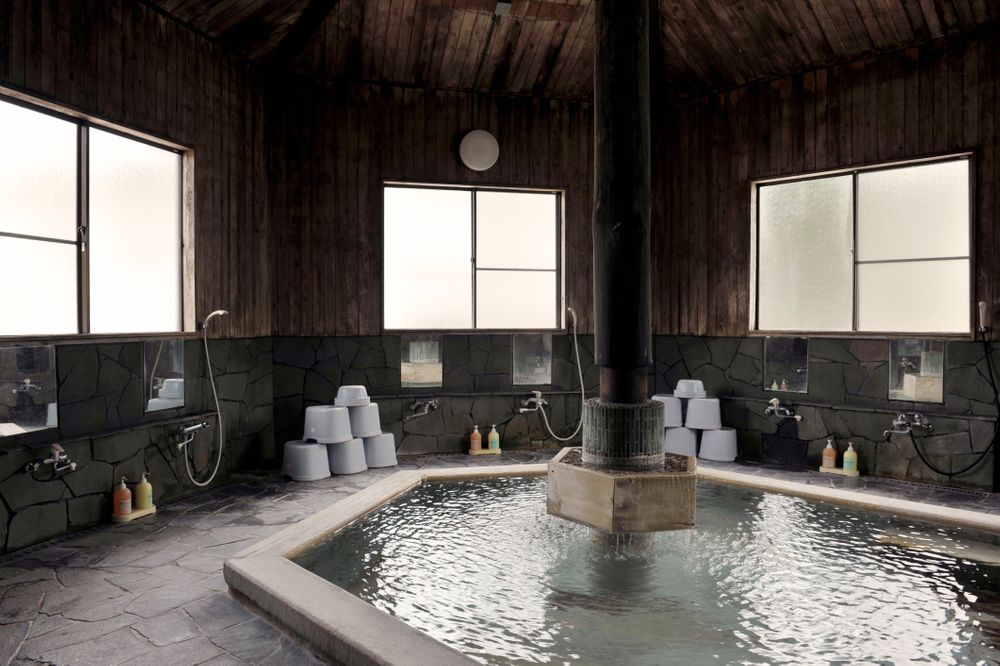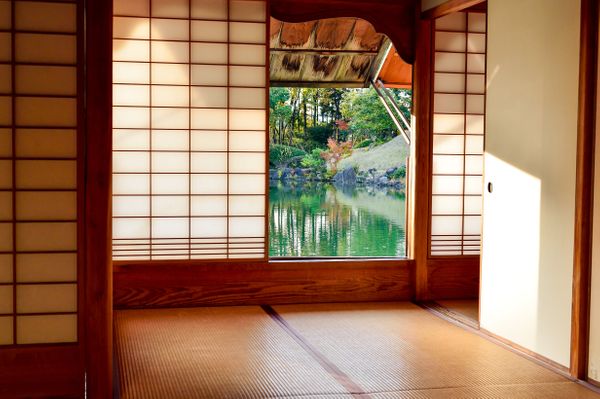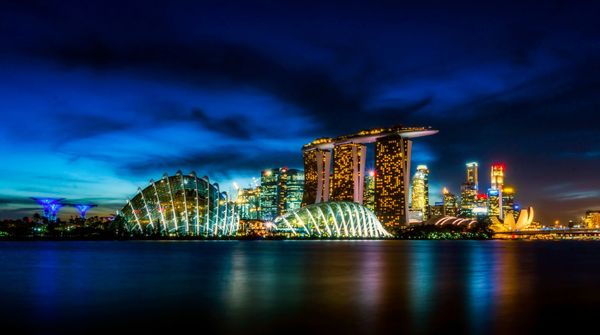A Beginner's Guide to the Onsen Experience
Before I discovered the joys of the onsen with their magical powers said to cure a variety ailments and skin conditions, I was completely baffled by this custom of strangers stripping down naked to wash their bodies alongside other naked people. My self-consciousness metre has always been off the scale.
During an unusual bout of adventurousness, with a pounding heart, I decided to give it a go and by then end I absolutely loved it. Despite feeling vulnerable in my nakedness, as I entered, three elderly women who were already there, washing, turned around, bowed slightly, and went right back to their washing and onsen-ing.
My fears dissolved.
Form that point, no one looked at me, they were only interested in their own relaxing experience. And so was I! I left with a newfound appreciation for this traditional Japanese experience and always long for the next time I can go back!
What is…
...an onsen?
An onsen is a Japanese hot spring that can be either indoor or outdoor. As a highly volcanic country, there are onsens everywhere, some belong to ryokans and others are sentōs (public bath houses).
...a sentō?
In the past, many homes in Japan were not equipped with a bathtub. To fill this void, the neighbourhood public bath was a place where the locals could go to wash themselves, soak in a tub and socialise with neighbours.
...a ryokan?
Ryokans are Japanese style inns found throughout the country, especially in hot spring resorts and vary in terms of size, cost and style.
Note: not all ryokans have an onsen.
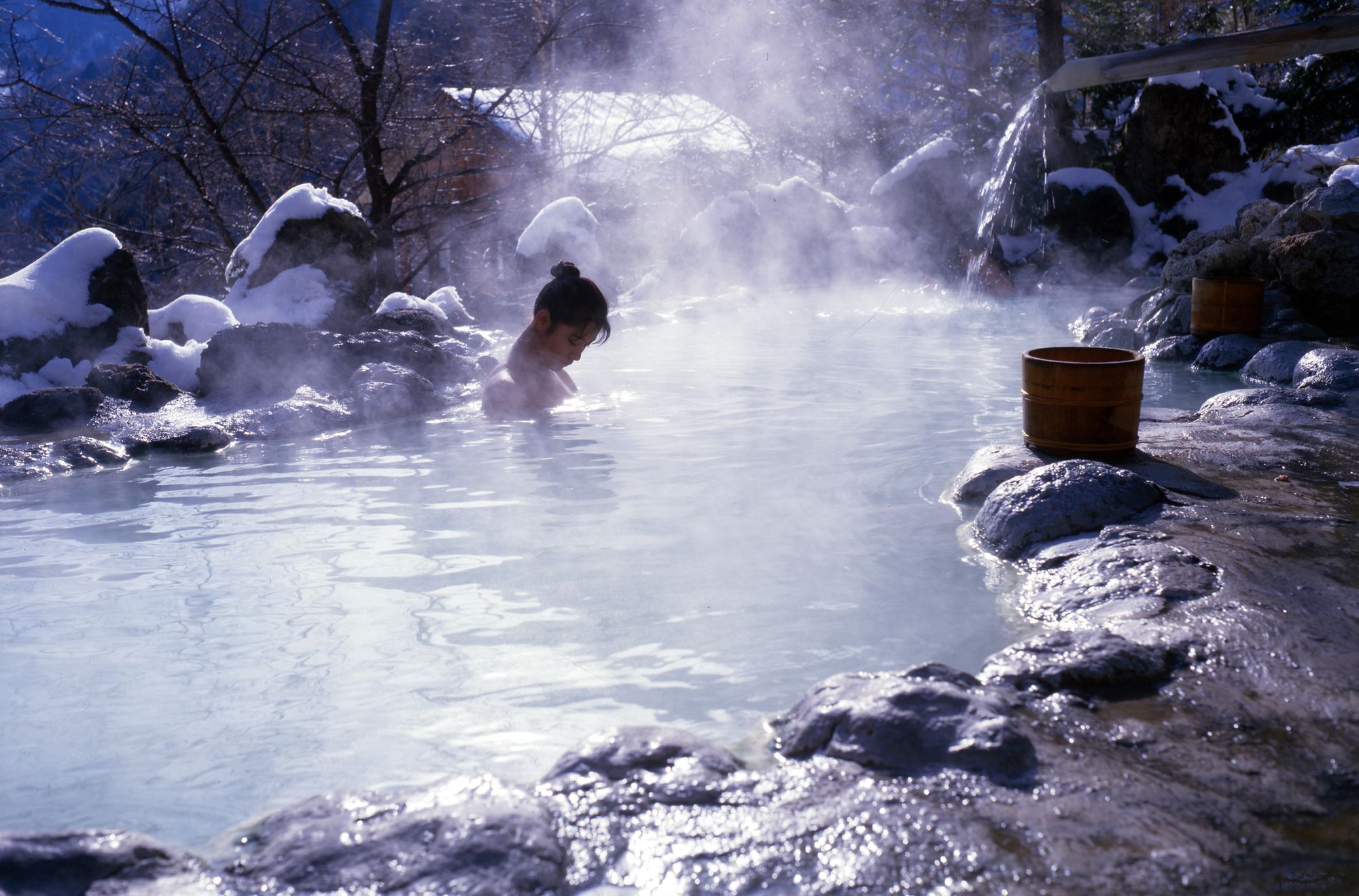
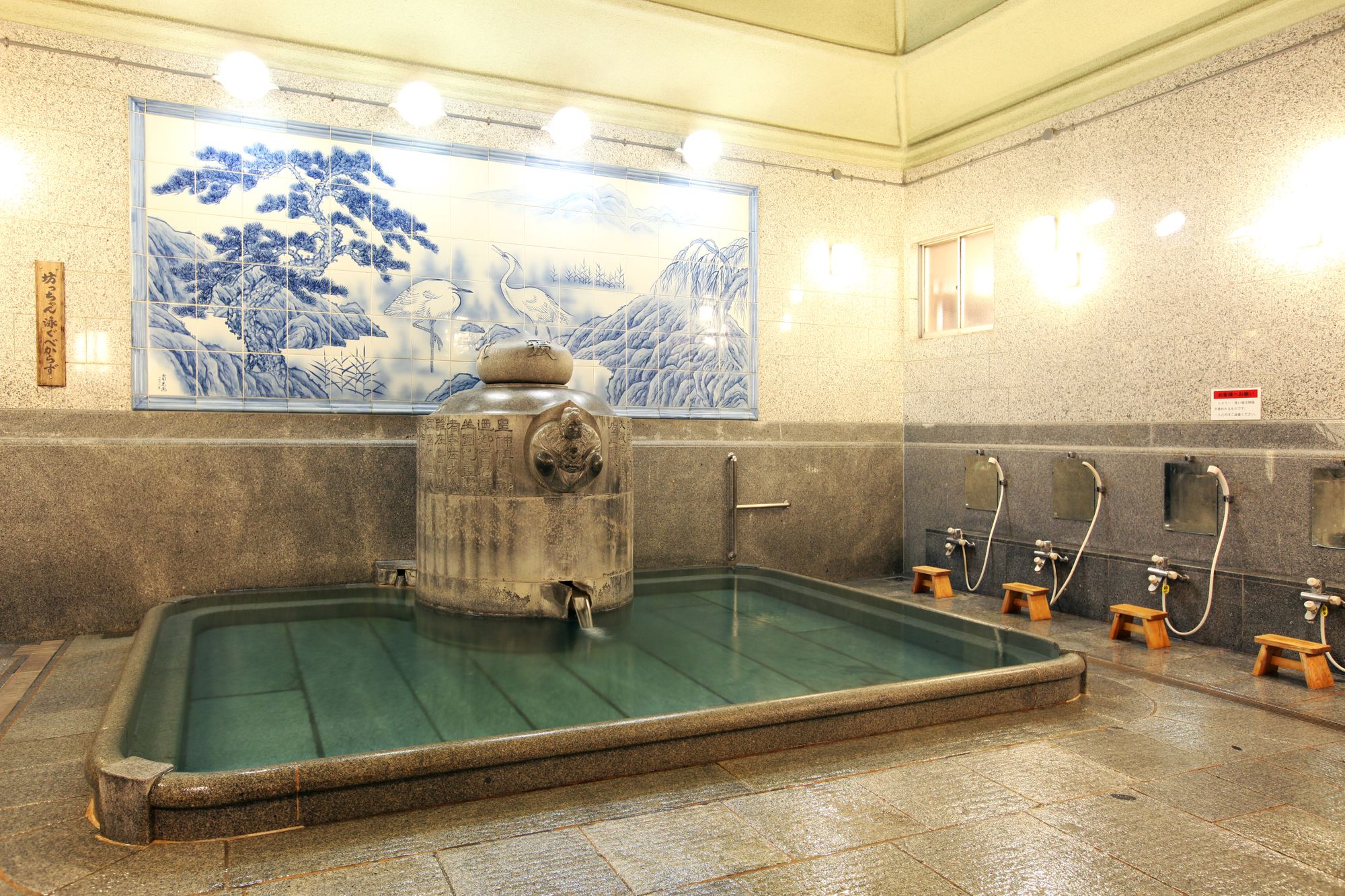
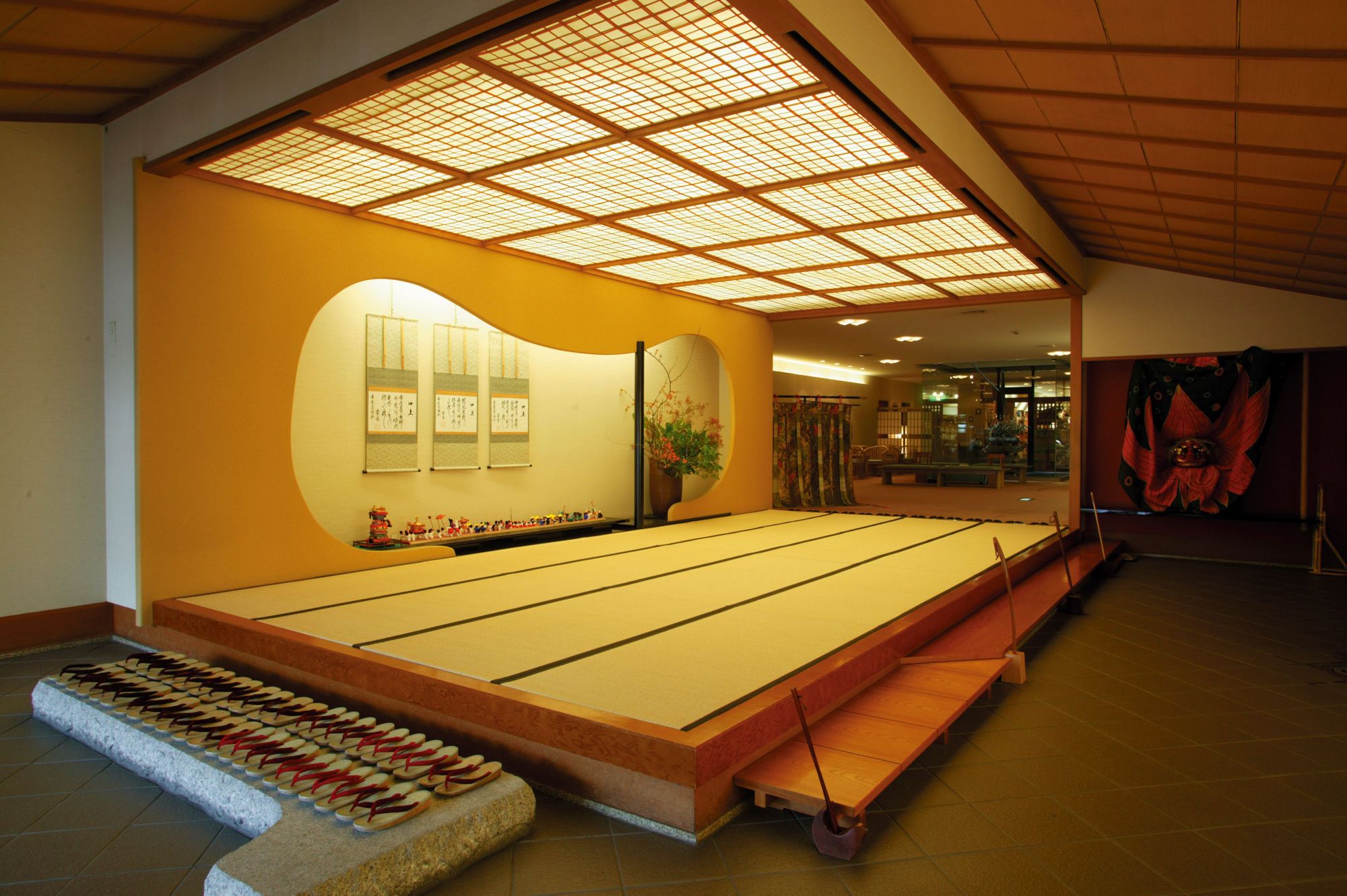
How to
Pre-onsen
Before you leave your room, put on your yukata, similar to a kimono only more casual, left side over right. I’ve worn it wrong so many times!

You will be provided towels in your room to take with you, a small wash cloth inside a plastic bag and a larger towel to dry yourself off. All onsens are different and provide different items for use in the changing area. Mostly commonly they will provide hair dryers, cotton buds and plastic brushes around the sink areas. If you want to do your nightly routine like taking off your makeup, brushing your teeth or moisturising you may need to bring your toiletries bag with you.
Inside the onsen you’ll find shampoo, conditioner and body wash. If you prefer to use your own bring them along in a shower caddy to make it easy to carry around.
Also, make sure you haven’t been drinking… you will feel unwell very quickly. While some public baths offer alcoholic drinks it’s best to wait till after the bath.
Note: toiletries provided in the onsen can vary so make sure to check beforehand.
In the onsen
- Make sure you enter the correct onsen as the genders are separated and alternate during the day and night.
- Undress and place your belongings into baskets provided. The only thing you can bring into the onsen area is the small towel to wash.
- Wash, wash, wash and do it very well! Find yourself a free spot and take a seat on the small stool. Wash with the small towel and use water collected in the small bucket and pour to rinse. There is also a shower nozzle. But conserve water while you’re doing it.
- Rinse off all soap, shampoo and conditioner well before you get into the bath and make sure your area has been rinsed well, ready for the next person.
- Use the towel for modesty while walking around the onsen, and be careful, it’s slippery!
- Place the towel either on your head or on the side, somewhere it will not touch the bath water.
- Enter the water gently and relax!
- Once you’re done, squeegie yourself with the little towel before entering the changing room so you don’t drip water everywhere.
- Once you’re back in your yukata, take a seat, sip some cold water and take it easy before heading back to your room.
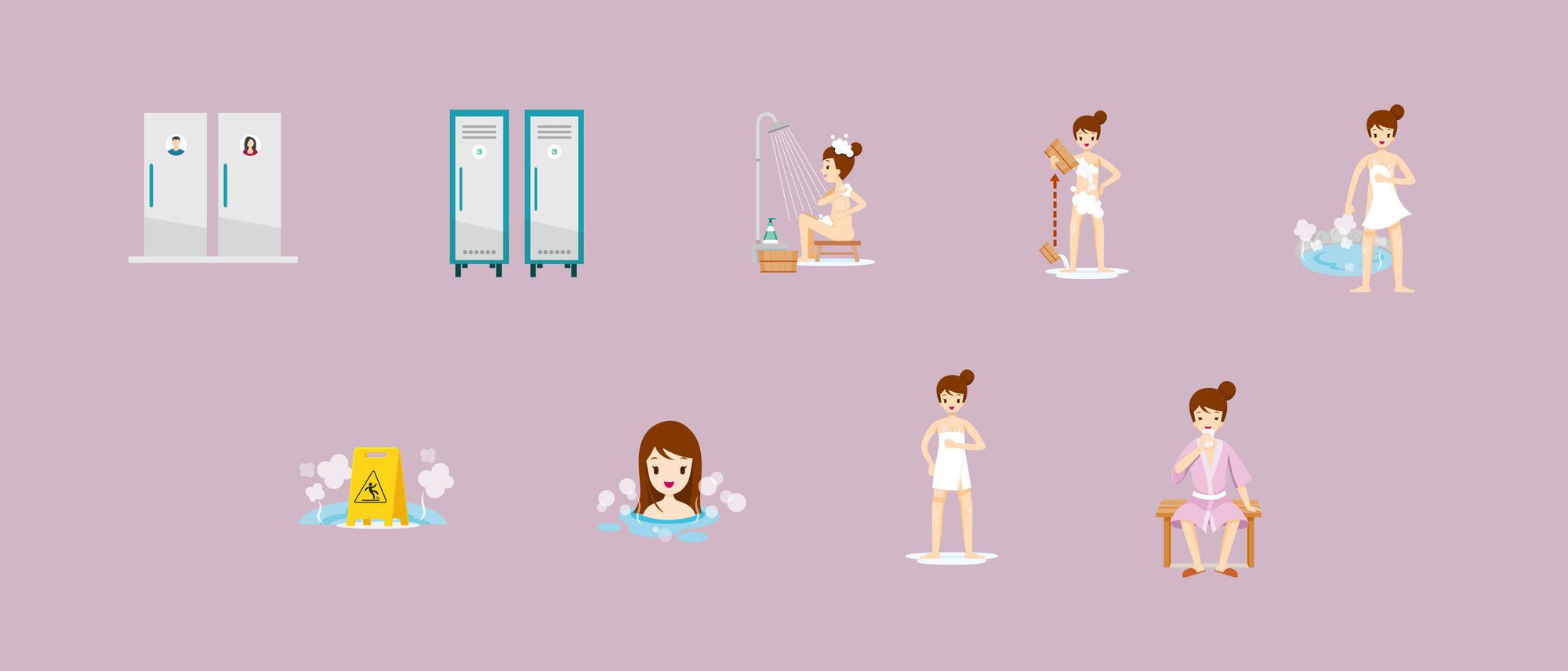
Some places have an outdoor, as well as indoor, onsen area which you can enjoy as the outside air is cooler. Other places have both hot baths, which is the ‘normal’ onsen, as well as a cold bath that you can switch between.
Post-onsen
The onsen is hot. You’ll find you can’t really stay in there for more than 10-15 mintues (depending on your body) without feeling faint… and it’s best not to let it get that bad! The whole point is to relax and unwind - not to make you ill.
Directly after you get out of the onsen, wipe off excess water before entering the changing room. Dry your hair, moisturise and any other post shower ritual you may have.
There is usually an area where you can sit down and have a cool drink, usually water and is a nice way to end. It is recommended that you don’t do much, physically or mentally, and use the following half hour to continue in relaxation and contemplation.
The issue with tattoos
My experience
The prohibition of tattos was one of the first thing I learnt about onsens. I have a small one on my left rib area and another on my right shoulder blade. Every single blog post I read, and every person I spoke to, said the same. You simply cannot enter if you have a tattoo, even if it’s a small one.
But I haven’t found this to be completely true.
There are certain onsens which explicitly display signs banning people with tattoos, see examples below1. If you happen to have tattoos, be respectful and don’t go to those particular bath houses.
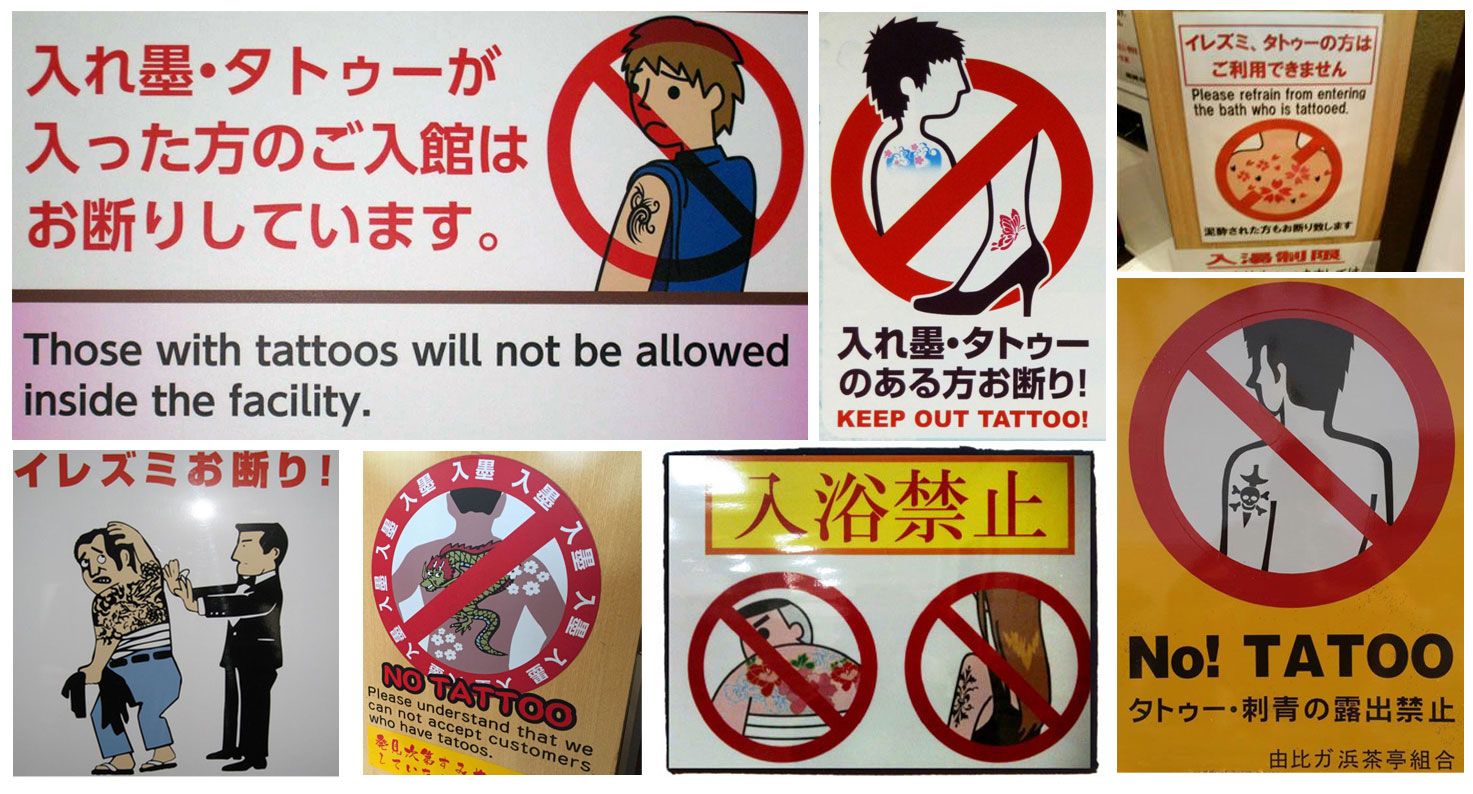
The onsens inside ryokans aren’t guarded or monitored and it has been absoluately fine for me to go in. I’ve now been to 5 different onsens with no trouble!
Another option is to book out the private onsens (which most ryokans have) and enjoy the onsen experience all on your own for the allocated time.
Tips and tricks
Depending on where you tattoo is located and it’s size:
- Cover up with skin colour band-aid
- Cover with the small towel provided
- Have your back agains the wall if you have a back tattoo
- Pick the end stall when washing to strategically hide your tattoo
The rules
✔️ the do's
- Naked: take off your clothing, underwear, jewellery and put your hair up so nothing but your clean and washed body touches the water.
- Modesty: use your little towel to cover yourself for modesty while walking around.
- Wash well: yep... all the nooks and crannies.
- Conserve water: don't leave the tap running while you're lathering up.
- Quiet: don't have to be silent, just respectful of your surrounding bathers.
- Children: so long as they are toilet trained! Yes, grandmas, mothers, daughters are all in the same onsen naked.
- Period: Wear a cup if you have your period, tampons are usually not allowed as the string hangs out and touches the water.
✖️ the don'ts
- Swimsuit: only your pure naked self can enter the water.
- Cleaning: soaking and contemplation, not washing. Wash before you enter the bath.
- Tattoos: this used to be a very strict rule but not so much anymore.
- Hair: always tie up your hair so it doesn't touch the water. You don't want to swim around in others hairballs, do you?!
- Photography: for very obvious reason... everyone is naked!
- Towel: only your clean and washed body should touch the bath water, not your hair, the towel or anything else.
- No swimming: it is meant for relaxation, meditation and contemplation.
